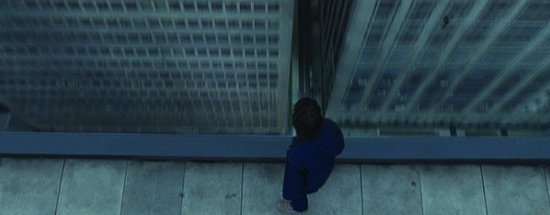
I don’t go to demonic-possession movies expecting to encounter interesting characters, but The Last Exorcism has them, and that’s what raises Daniel Stamm’s faux documentary to a level of complexity few horror films even attempt.
Its protagonist, Cotton Marcus, has been brought up in Baton Rouge by his minister-father to be an evangelist, a faith healer, and—when the need arises—an exorcist. As the movie begins, Marcus is confessing to the faux-documentary film crew that he lost his faith a long time ago and now regards his preaching and healing as nothing but pandering for profit. He’s a fraud, but a compassionate fraud. If the congregation feels it’s communing with Jesus when Cotton gyrates, so be it. If the superstitious believe a devil can enter them, then Marcus will couple his hocus-pocus with some practical advice (get counseling, join AA) while pocketing their dollars. Besides, Marcus is a talented amateur magician, so this work lets him indulge his hobbies. Summoned to an isolated farm to perform rites on a teenaged girl, he invites the “filmmakers” along to make a movie that will expose what a con exorcisms are. Guess who’s riding for a fall.
But consider the protagonist’s name and recall a more sincere preacher who believed in witches enough to have some Salem women hanged, and who had so much faith in science that he became a guinea pig for the smallpox inoculation. Cotton Mather repented of the credulity that involved him in the witch trials; Cotton Marcus is a secular humanist deriding the idea of the supernatural. So will Cotton Marcus put aside his skepticism when faced with evidence of the supernatural? That question holds our interest more than the film’s gruesome special effects.
While Cotton is interesting when he opens up to the “filmmakers,” the family who seek his help—widowed father, son, and supposedly possessed daughter—is spookily opaque. Their inscrutability increases as the exorcism unfolds. Is the girl a home-schooled innocent, a liar craving attention, or a disturbed victim defiled by her father? Is the father a caring man trustingly turning to God or a child-abusing drunk? And is his son merely a troubled teen embittered by his mother’s death or a thug up to no good? Those questions work mischief on us, but the film provides answers for careful viewers. Like The Turn of the Screw, The Last Exorcism is a trap for the unwary. Regrettably, the denouement switches the story from one horror genre to another. For eighty minutes you’re watching a variant on The Exorcist, only to discover that you’re seeing another...well, I won’t spoil it by naming the other well-known movie it resembles.
Daniel Stamm’s use of the faux-documentary format (as in The Blair Witch Project, we see only what the movie crew shoots) is the most interesting example of the genre I’ve seen. There’s provocative tension in the fact that both Cotton and the moviemakers are trying to debunk the supernatural while what they film seems to certify it. There is also an aesthetic tension. A documentary is supposed to capture raw reality, with no hokey visual trimmings (mist, scary shadows, etc.). But the household they visit is so isolated and shuttered that everything in it outspooks the glossiest Hollywood movie.
Yet, like most fake documentaries, the film suffers from a conceptual inconsistency. After we’ve seen the camera crew create the footage that becomes The Last Exorcism, we’re left with the question: How was the material edited and scored, given that the story’s conclusion indicates that no postproduction work was possible? Then again, who ever went to a horror movie expecting consistency? (Maybe the sequel will address it.)
The acting fulfills the complexities suggested by the script. Louis Herthum, who resembles Ed Harris, keeps you guessing about the father’s intentions. As the possessed girl, Ashley Bell is so radiant that you never stop feeling sympathy for her even when she seems most dangerous. Obviously, the movie stands or falls with the performance of Patrick Fabian as Cotton. An actor who has done a lot of TV but never had a film lead, Fabian maintains in perfect equipoise Cotton’s conflicting qualities: compassionate cynicism, corroded religiosity, and a huckster slickness that can’t kill a conscience.

Lest you think that we are in for a wave of good demonic-possession movies, here comes the doltish Devil, whose credits say that the story came from M. Night Shyamalan, though it was written by other hands. Did Shyamalan realize how idiotic the plot was when he farmed it out? The devil disguises himself as a human being trapped on a malfunctioning elevator with four unpleasant people so he can claim the soul of one of them by driving him or her to despair. To achieve his aim, he kills one of the others whenever the elevator light flickers out. And why would this produce despair in the desired sinner rather than sheer mind-boggling, conscience-freezing terror? And why is the whole diabolic effort necessary when the sinner is already in despair over a crime committed and regretted some time ago? Yes, inconsistency can be forgiven in mindless entertainments but, beyond a certain point, it insults the viewer.
Of course, the setup is straight out of Agatha Christie’s Ten Little Indians: a group of stranded people are killed off one by one until only the murderer and one victim remain. The audience has to guess not only whodunit but also who will survive. Devil inflates this good clean fun with theology lite.
Devil has nicely overcast cinematography by the great Tak Fujimoto (who shot The Silence of the Lambs), yet not a frame of the movie goes untainted by stupidity. Still, it gives rise to one interesting question. Will any director ever have the guts to set an entire movie in an elevator? Much of Devil’s action takes place outside the elevator as the NYPD investigates. Ingmar Bergman created a wonderful comic episode in the omnibus Secrets of Women by putting an estranged married couple in a stuck lift and letting them rediscover each other’s charms, but that was a twenty-five-minute episode. If anybody dares to try it at feature length, I’d like to see it—provided it’s not directed by Lars von Trier.
Related: Cinematic Scares, by Rand Richards Cooper


